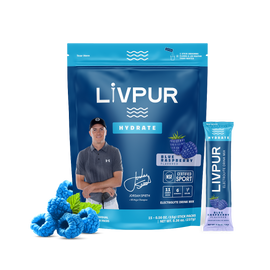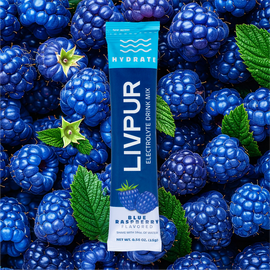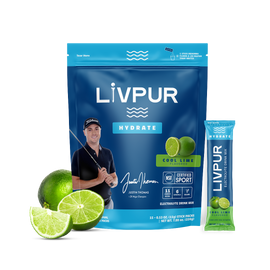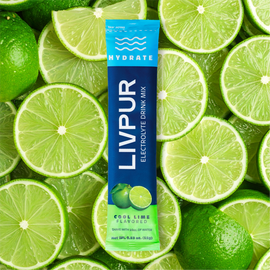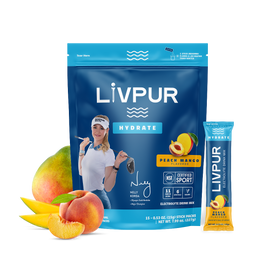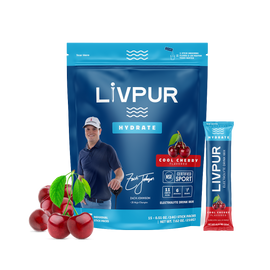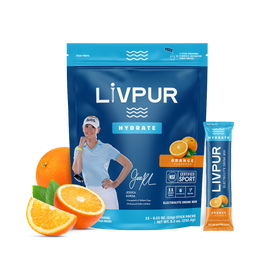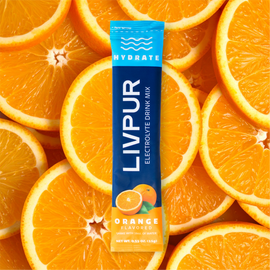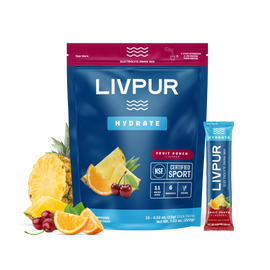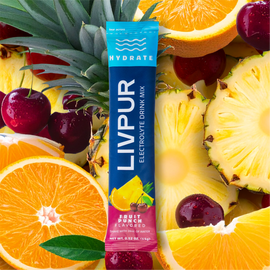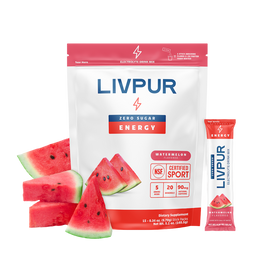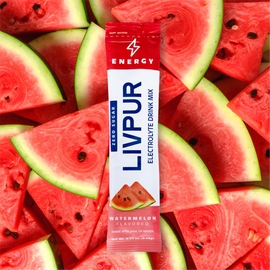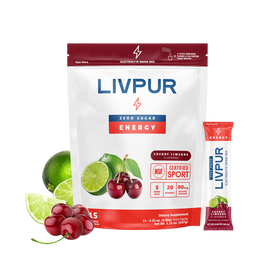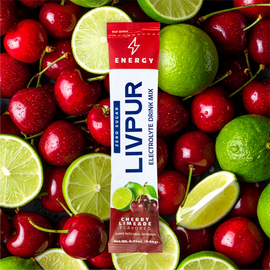November 20, 2023 • By Laura Onie • Blog
Finding Balance with Electrolytes
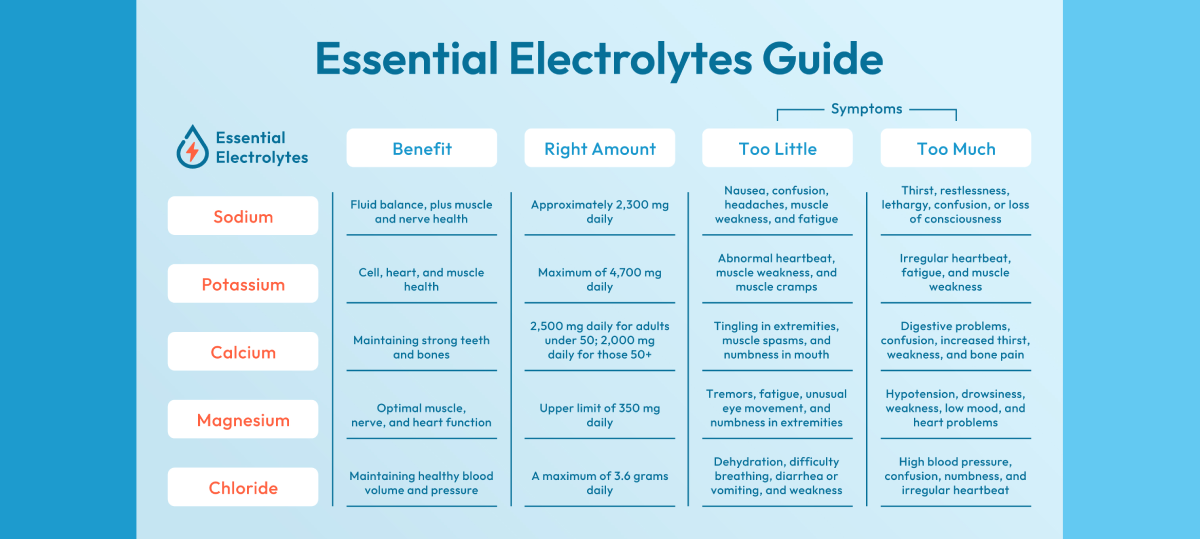
We know there are consequences to having too much or too little of something, and electrolytes are no different. Your kidneys work hard every day helping to balance your body’s electrolytes, but intense physical activity, illness, and daily habits can add extra pressure.
Fortunately, with a better understanding of the give and take, the perfect balance is possible – no matter what you have going on.
Today, we’re answering some of your most pressing questions about electrolyte balance. Can you have too much, and where should you get them?
What are electrolytes?
An electrolyte is a mineral that when dissolved in fluid, becomes either a positively or negatively charged ion.
Electrolytes travel throughout the blood and fluid in the body. They manage the body’s pH balance, fluid balance, muscle contractions, heart rhythm, nutrient delivery, and more.
The Main Electrolytes
There are more than a dozen electrolytes, but some are especially important to keep in balance.
Sodium
You need a minimum of 500 mg of sodium daily to be able to relax or contract your muscles. Sodium is also the main electrolyte for regulating mineral and fluid balance. It’s also vital for our nerves, which must carry messages between the brain and the rest of the body.
Potassium
Potassium helps out with a lot of sodium’s tasks, from fluid regulation and muscle contraction to nerve communication. It’s also important in maintaining a hospitable pH balance in the body, along with promoting proper digestion.
Calcium
We know our bones and teeth are made strong with calcium. However, this electrolyte is also crucial for circulation as well as those nerve signals that coordinate the brain and body’s efforts. Calcium also plays an essential role in hormone production.
Magnesium
Did you know that magnesium helps us make our DNA? Additionally, it contributes to a healthy heartbeat and energy production. Still, people who supplement magnesium notice its benefits for the muscles most of all.
Chloride
Chloride collaborates with other electrolytes to balance fluids and pH levels. It’s also key to maintaining healthy blood volume and pressure. Plus, it helps us produce stomach acids for digestion.
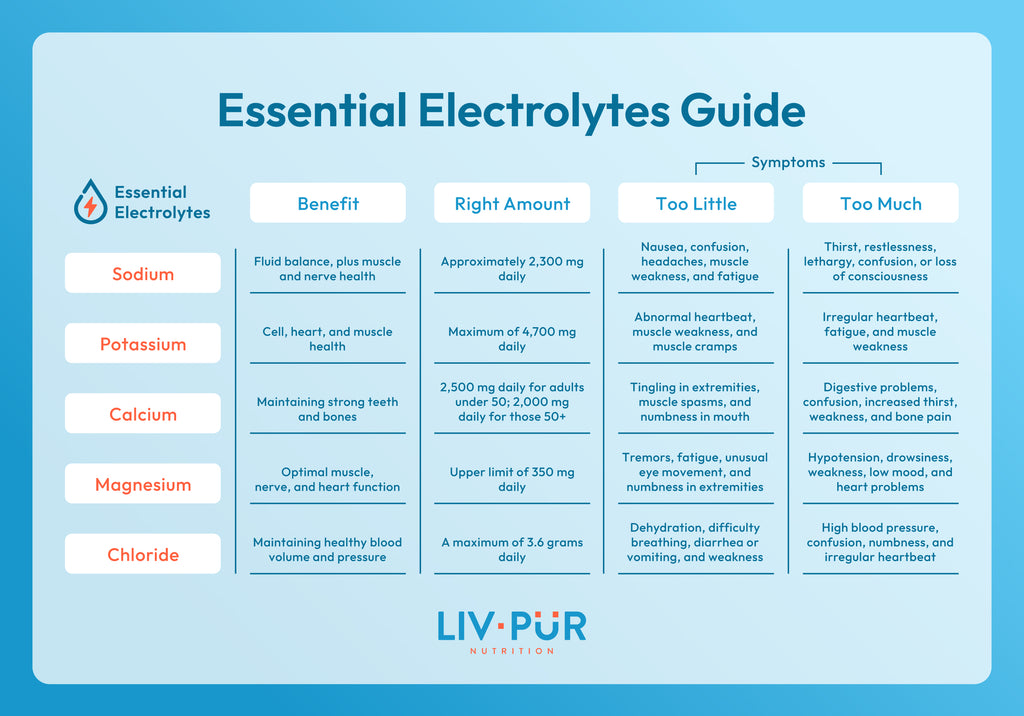
What is the best source of the main electrolytes?
Since electrolytes are essential minerals, we get them in our diets. Whole foods such as bananas, spinach, oats, avocados, yogurt, and table salt are electrolyte sources, among many others.
However, it’s the process of dissolving the mineral in water that creates the charged activity the body relies on. While research shows that drinking a glass of water before eating mineral-rich foods can help, many prefer electrolytes in powder form or electrolyte water.
Ultimately, if you want a complete lineup of electrolytes in the right quantities, a powder may be the best source. Electrolyte water typically does not share how much of each mineral is in the mix.
Can you overdo electrolytes?
Yes, too many electrolytes can lead to conditions such as hypernatremia, hyperkalemia, and others as shown on the infographic above.
The generally accepted minimum amount of electrolytes per day is 1,600 to 2,000 mg (40 to 50 mEq). This applies to a healthy adult performing normal activities. Most electrolyte packets will contain roughly a third of this.
In the end, it’s not easy to get too many electrolytes if you’re replenishing what you’re losing. Those electrolyte-infused drinks can be a savior during sweaty activities or after a dehydrating illness. Even if you eat a healthy diet rich in minerals, electrolyte powders can help optimize hydration levels quickly.
Electrolyte Imbalance: Causes, Symptoms, & Treatment
If just one of your electrolytes is too high or too low, this is an electrolyte imbalance. That means you can be good on sodium, great on potassium, and just right on magnesium and chloride, but if your calcium is too low, there’s a problem.
Often, the cause of this imbalance is losing too many electrolytes through sweating during heavy physical activity.
However, it is also relatively common with illnesses, as a side effect of medications or medical conditions, or because you drank too much water. Drinking too much water dilutes the concentration of electrolytes in your bloodstream. This is one cause of conditions where you’re too low on an electrolyte.
The symptoms of an electrolyte imbalance may vary depending on the type of electrolytes in question and whether they’re too high or low. In general, the most common symptoms are:
- Changes in cognition or disposition: Irritability, confusion, or lethargy
- Pain: Headaches, muscle cramping, or even joint pain
- Numbness and tingling in limbs, especially fingers and toes
- Weakness and fatigue, in muscles or overall
- Changes in thirst, urination, or sweat
In mild or “normal” cases, replenishing electrolytes is sufficient. If you have a multitude of symptoms, some severe, it may warrant a trip to the emergency room. Doctors can order an electrolyte panel if you have a health condition, but IV fluids and medicines are the main treatment.
Preventing Electrolyte Imbalance
Unless there are other underlying health factors, electrolyte imbalance is preventable through everyday habits.
- Eat a balanced diet that primarily consists of whole foods containing minerals
- Drink water before meals
- If you begin to sweat, replace what you lose with electrolyte drinks
Does drinking water balance electrolytes?
Yes and no. Water on its own is not going to replenish lost electrolytes. You still need it since it’s what dissolves minerals into electrolytes, whether we eat or supplement them.
Hydration, and ultimately, electrolyte balance, comes down to the combination of fluids and electrolytes.
If I don’t sweat, am I still losing electrolytes?
Yes. That cardio session or tough task that gets your heart pumping can remove electrolytes, even if you didn’t break a noticeable sweat.
That’s because we also lose fluid breathing, and we lose more if we’re breathing heavily. There are electrolytes in the vaporous fluid of our breath, so if you’re huffing and puffing, these need replacing as well.
Is it safe to take electrolytes while breastfeeding?
In short, yes. Electrolyte powders can be very helpful in many of these cases. The main thing to keep an eye on is the frequency; those breastfeeding need to pay more attention to moderating how much of these ingredients they ingest.
And of course, read the label. Some formulas may have vitamins or other ingredients you don’t want to supplement, or the brand itself will advise against it.
Choosing Drinks with Electrolytes
There used to be a time when sports drinks were the only way we knew to intentionally supplement electrolytes.
Today, many of these drinks are too high in sugar. Some estimates find that sports drinks make up about a quarter of total sugary beverage intake in adolescents.
As an alternative, some sports drinks use low-calorie sugar substitutes. However, the answer to choosing effective drinks with electrolytes is to dial the sugar way down, not skip it altogether.
A few grams of glucose helps the gut absorb sodium and water for more efficient hydration. For comparison, a regular 20-ounce sports drink contains about 36 grams of sugar, which is the daily upper limit for adult men. The amount of glucose needed to boost electrolyte absorption is roughly three grams.
Electrolyte powders have become very popular for this reason. Here’s a rundown of the biggest pros:
- Often come in single-serve electrolyte packets that are convenient to carry and add to water as necessary
- Includes a range of electrolytes to encourage balance
- Offer a biologically beneficial amount of sugar for absorption, instead of too much or none at all
- Contains other vitamins and nutrients that help sustain energy levels and promote overall health
It is also helpful to choose hydrating electrolytes powders that contain natural flavors.
Lastly, be advised that electrolyte powders aren’t always suitable for those with certain heart and kidney conditions, nor those on a low-salt diet. If any of that applies to you, check with your doctor first.
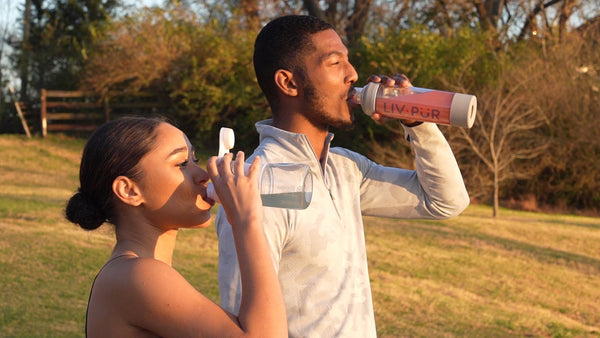
Empower Yourself with Electrolytes
Electrolyte balance and fluid balance – they’re not the same, but you can’t have one without the other. After all, part of electrolytes’ role is maintaining fluid levels. That’s in addition to critical functions like delivering nutrients and making the heart beat properly.
An electrolyte imbalance can occur if any one electrolyte is too high or too low. In cases where the imbalance isn’t caused by a medical condition, supplementing electrolytes can help.
Today’s electrolytes powders offer us much more than yesterday’s sports drinks. They contain just a little bit of sugar for better absorption, plus a full range of electrolytes and other nutrients like B vitamins.
With the popularity of electrolytes powder, better options are more accessible than ever. For instance, LivPur’s Hydrate formula meets every standard discussed here today. Plus, many flavors are NSF Certified for Sport, ensuring consistent quality and truth in labeling.
